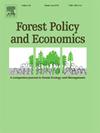农民认为REDD+生计干预措施是减少Juabuso-Bia可可林景观毁林的激励机制
IF 3.8
2区 农林科学
Q1 ECONOMICS
引用次数: 0
摘要
在加纳,可可生产仍然是农村生计的重要来源,但也是热带森林砍伐的主要驱动因素。本研究探讨了可可农民对加纳可可林REDD+1计划(GCFRP)下的生计干预措施如何影响其收入的看法,重点关注了Juabuso-Bia热点干预区(HIA)。尽管GCFRP提出了目标,但在理解REDD+利益的公平分配及其对农民生计的影响方面仍然存在差距。采用q -方法学、半结构化访谈和焦点小组讨论,我们考察了农民采用GCFRP干预措施的经验。主要发现包括:(1)HIA的生计干预措施似乎不足以实现生活收入;Ii)目前改善生计的机制覆盖面有限,变化理论定义不清;Iii)这些生计干预措施与国家政策之间存在脱节,导致气候智能型可可实践的投入供应不规律和不足vi)农民更有可能通过当前产量的公平生产者价格而不是通过增加产量来达到生活收入水平。我们的结论是,GCFRP干预措施目前缺乏必要的激励措施来阻止导致森林砍伐的不可持续做法。这些发现突出表明,有必要修改该计划的变化理论和政策一致性,以便更好地将减排目标与农民收入和生计的改善联系起来。建议对其他hia进行进一步研究,以加强REDD+的实施成果。本文章由计算机程序翻译,如有差异,请以英文原文为准。
Farmer perceptions of REDD+ livelihood interventions as incentive mechanism for reducing deforestation in the Juabuso-Bia cocoa forest landscape
Cocoa production in Ghana remains a vital source of rural livelihoods but is also a major driver of tropical deforestation. This study explored cocoa farmers' perceptions of how livelihood interventions under the Ghana Cocoa Forest REDD+1 Program (GCFRP) affect their incomes, with a focus on the Juabuso-Bia Hotspot Intervention Area (HIA). Despite GCFRP's stated goals, gaps remain in understanding the equitable distribution of REDD+ benefits and their implications for farmer livelihoods. Using Q-methodology, semi-structured interviews, and focus group discussions, we examined farmers' experiences with GCFRP interventions. Key findings include i) livelihood interventions in the HIA appear inadequate for achieving living incomes; ii) current livelihood-enhancing mechanisms have limited coverage and poorly defined theories of change; iii) a disconnect exists between these livelihood interventions and national policies, leading to irregular and insufficient input supplies for climate-smart cocoa practices vi) farmers are more likely to reach living income status through fair producer price for current yields, rather than through increased production. We conclude that GCFRP interventions currently lack the necessary incentives to deter unsustainable practices contributing to deforestation. These findings highlight the need to revise the program's theory of change and policy alignment to better link emission reduction goals with improved farmer incomes and livelihoods. Further research across other HIAs is recommended to strengthen REDD+ implementation outcomes.
求助全文
通过发布文献求助,成功后即可免费获取论文全文。
去求助
来源期刊

Forest Policy and Economics
农林科学-林学
CiteScore
9.00
自引率
7.50%
发文量
148
审稿时长
21.9 weeks
期刊介绍:
Forest Policy and Economics is a leading scientific journal that publishes peer-reviewed policy and economics research relating to forests, forested landscapes, forest-related industries, and other forest-relevant land uses. It also welcomes contributions from other social sciences and humanities perspectives that make clear theoretical, conceptual and methodological contributions to the existing state-of-the-art literature on forests and related land use systems. These disciplines include, but are not limited to, sociology, anthropology, human geography, history, jurisprudence, planning, development studies, and psychology research on forests. Forest Policy and Economics is global in scope and publishes multiple article types of high scientific standard. Acceptance for publication is subject to a double-blind peer-review process.
 求助内容:
求助内容: 应助结果提醒方式:
应助结果提醒方式:


